Link juice or link equity is a jargon loosely thrown around when SEOs discuss link building. From an experienced webmaster’s perspective, they might dismiss link equity as simply a ranking factor or a new term for PageRank. But there’s more to link juice in SEO.
This resource will explore link juice, how it relates to search engine optimization and tips for maximizing it for internal links.
What is Link Juice?
Link juice, also known as link equity, is an SEO term that describes the value or authority passed from one page to another through hyperlinks. This SEO value can be transferred between pages on the same website or between two web pages in separate domains.
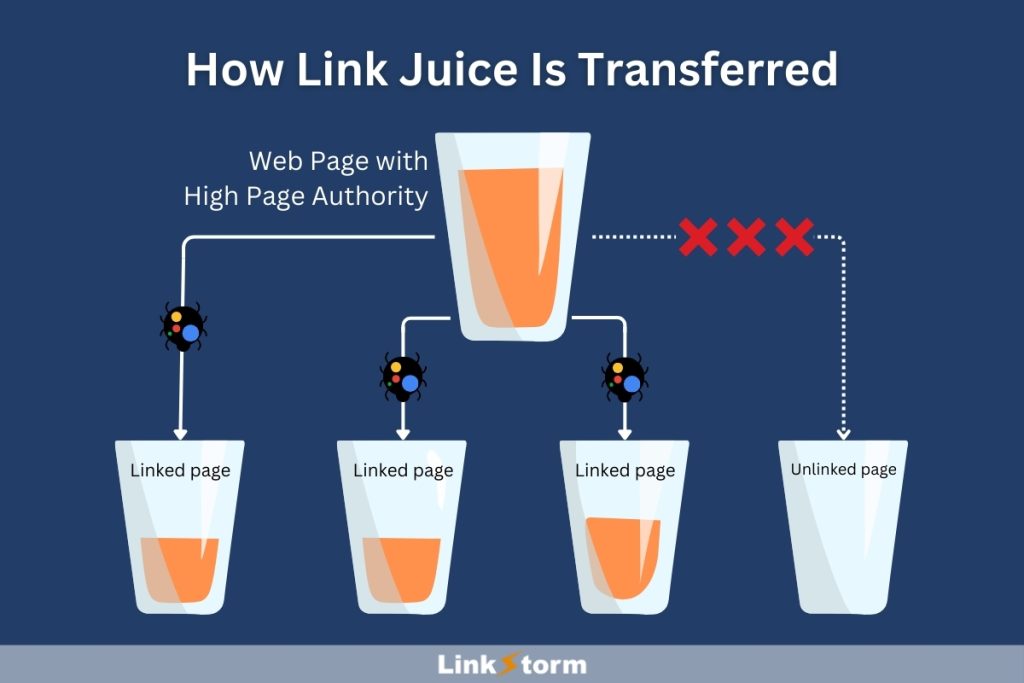
The rationale behind link juice is that links from high-authority to low-authority pages can boost the latter’s page authority and performance in search results. In other words, link juice influences search engine rankings. Effective management of link juice is essential for optimizing SEO strategies.
The amount of link juice transferred from the source page depends on several factors:
- Linking page’s authority
- Link relevance
- Type of link
… and more.
Let’s take a look at how link juice works between links.
Link Juice vs. PageRank
Link juice and PageRank are closely related concepts often used interchangeably—and for good measure, as both involve links.
However, there’s a fine line that separates link equity from PageRank.
Link juice refers to the SEO value or authority passed between pages. This value influences the linked page’s credibility and ranking potential in search engine results.
On the other hand, PageRank is the first and historic algorithm developed by Google to measure if web pages are relevant, important, and authoritative based on the quantity and quality of links pointing to them. In other words, the backlink profile is all that matters to rank pages for given queries.
While still part of Google’s ranking algorithm, PageRank is only one of hundreds of factors influencing search rankings.
Both concepts highlight the importance of strategic link-building and the quality of links in SEO: Link juice emphasizes the flow of authority and value across web pages through links, while PageRank is an algorithm that assigns a score to a page based on the quality of its backlinks.
How Does Link Juice Work?
While the principle of link juice is pretty straightforward, its technicality is difficult to measure.
To help us understand how it works, we must keep all ranking factors constant to isolate and effectively illustrate the flow of link juice.
Here are two scenarios:
Scenario 1: Suppose there are two pages, A and B, both with constant ranking factors. However, Page A links to 4 separate pages, while page B links to 3 separate pages. The link juice from pages A and B will be equally divided among their respective linked URLs. In other words, the more links on a page, the less link juice each page receives. Since more pages share the link juice on Page A, theoretically, each linked page on Page A receives less equity than Page B.
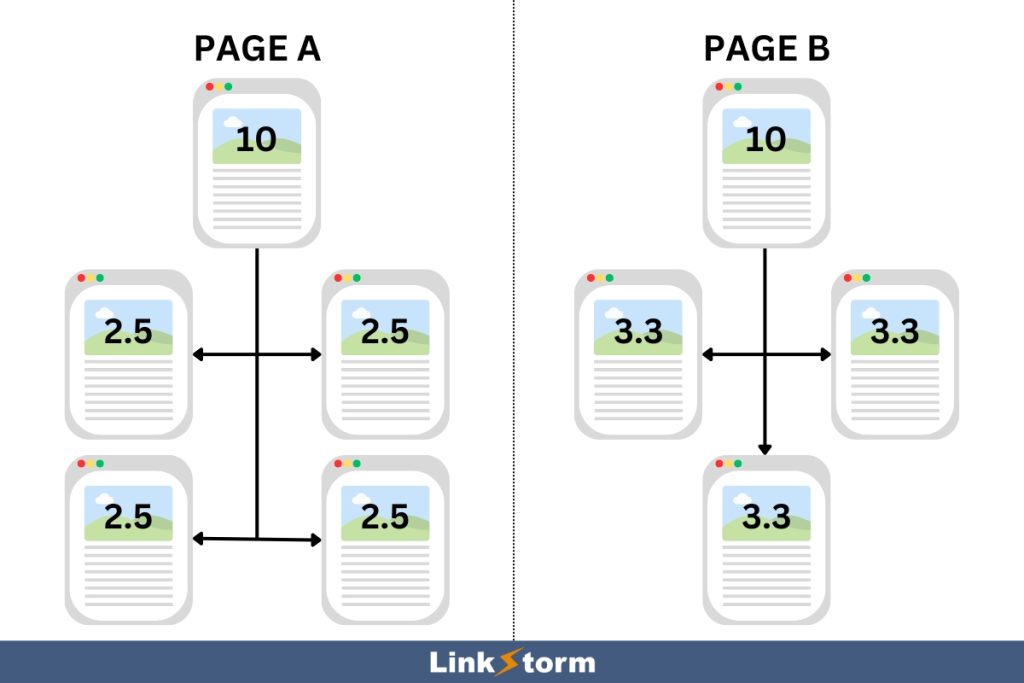
Scenario 2: Suppose two pages, A and B, rank for the same keyword. However, 4 pages link to Page A, while only 3 link to Page B. With all other ranking factors being equal, theoretically, Page A will perform better on SERPs than Page B for the keyword they are ranking for.
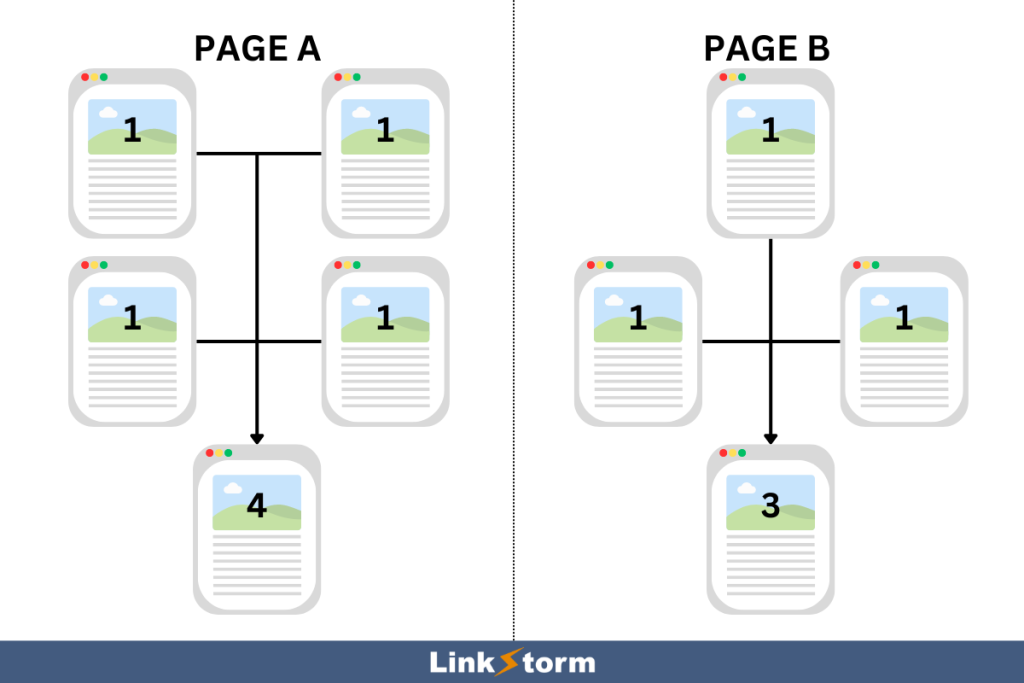
Link Juice Sculpting
In the past, users may have qualified links with the rel=’nofollow’ attribute to prevent the transfer of link juice through them. This was a manipulative tactic to concentrate the flow of link juice to the desired pages, known as page rank sculpting.
Below, you will see that dofollow links transfer the link juice equally to the linked pages that do not have a rel=’nofollow’ attribute. Check the diagram below for reference:
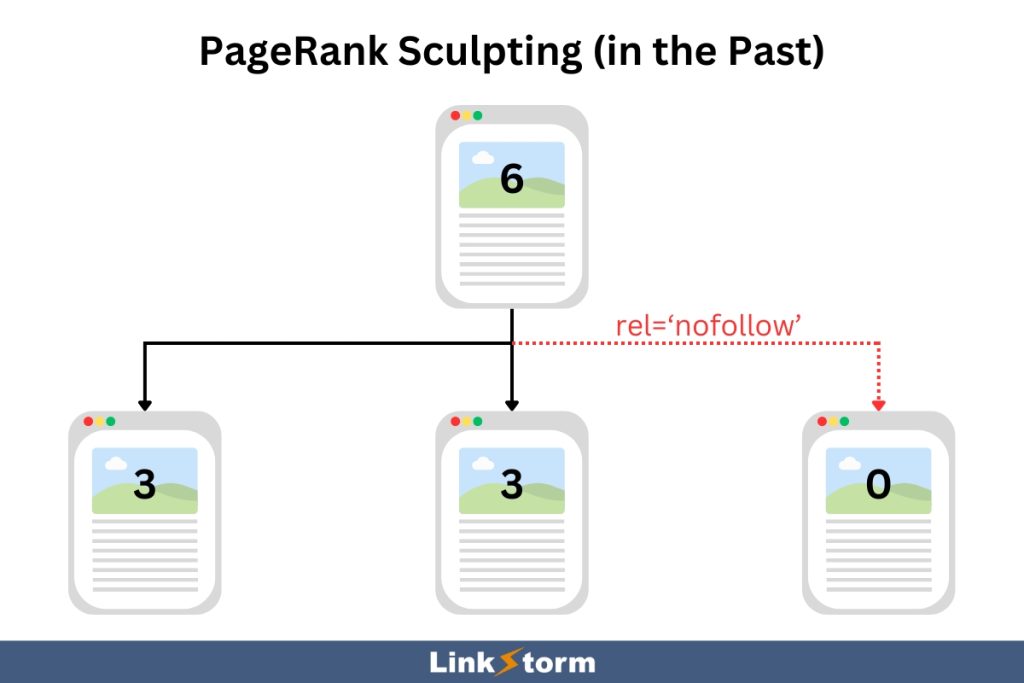
However, the concept of link juice sculpting suggests that the flow of link juice is perpetual. In theory, if we created a linking loop, link juice would reach infinity. This wouldn’t be beneficial in the long run as SEOs and site owners will exploit this for their own gain.
The creators of Google, Larry Page and Sergey Brin, introduced a “decay factor” in response. According to Matt Cutt’s blog on PageRank sculpting, “You could think of it as 10-15% of the PageRank on any given page disappearing before the PageRank flows along the outlinks.”
Google changed the algorithm on link passes, where the link juice will still be equally divided among all the linked pages, whether dofollow or nofollow. However, the nofollow links will not receive the link juice in this case.
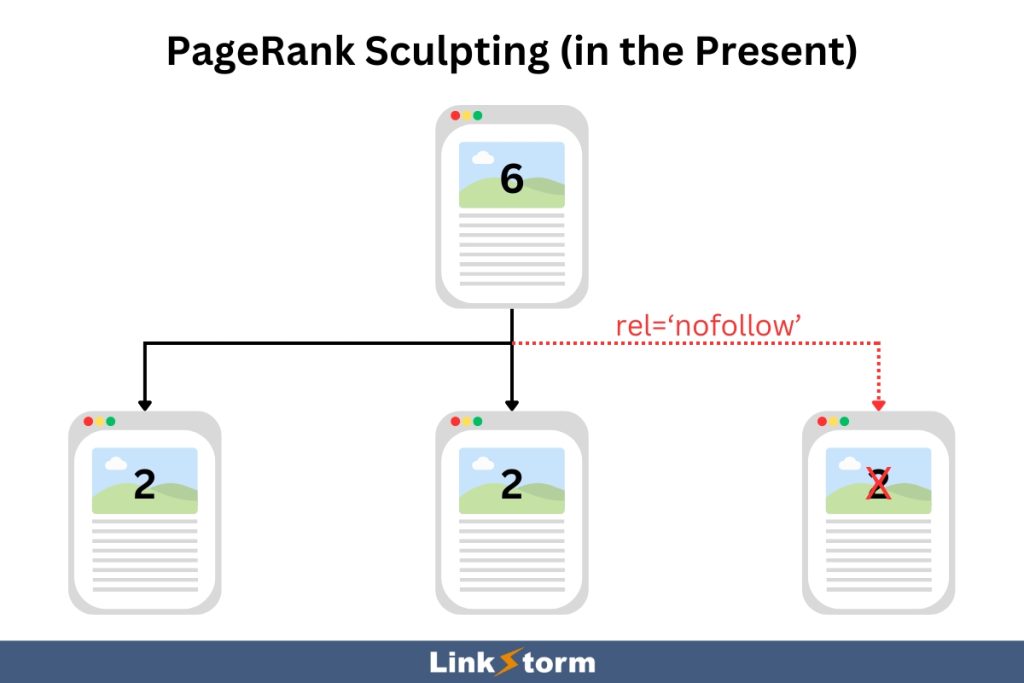
How is LinkJuice in SEO Determined?
Now that we’ve covered how link juice flows across links, let’s explore the factors influencing the amount of link juice. While the amount of link juice passed isn’t a measurable quantity, SEOs and site owners can estimate it based on various factors. Here are they:
The relevance of the content
When one page links to another, the relevance of the source and target pages affects the amount of link juice transferred. Links between contextually relevant pages tend to pass more link juice than links between unrelated pages.
For instance, linking to a construction landing page from a blog article about fashion will not be valuable or relevant to fashion readers, limiting the amount of link equity passed between the two pages.
The number of links
How many links you have on a page is inversely proportional to the amount of link juice each of the linked page receives.
Having more internal and external links within a piece of content means more target pages will share the link equity.
Effectively managing the number of links ensures that only highly relevant and valuable pages get more link juice. This increases the odds of boosting the target pages’ performance on SERPs.
The authority of the linking site
Website authority is an SEO metric that describes the credibility and trustworthiness of a particular domain. Authoritative websites are likelier to rank favorably in search engine results pages. High-authority sites pass more value to linked pages, considerably boosting the target site’s search performance.
A site’s authority is measured by various factors, including:
- Content quality
- Backlink profile
- Engagement metrics
While they do offer insights into a website’s overall strength, website authority is not necessarily a Google ranking factor. Instead, various SEO tools developers have developed patented systems to quantify website authority based on established ranking factors.
Tools like Moz’s Domain Authority (DA) and Ahrefs’ Domain Rating (DR) measure a site’s authority on a scale from 0 to 100.
- Domain Authority: DA predicts how likely a website ranks on SERPs using an algorithm correlating their tool’s link data (linking root domains and total number of links) with actual search results.
- Domain Rating: DR measures a site’s authority based on its backlink profile, which includes the quality and quantity of backlinks.
Naturally, both Moz and Ahrefs keep their formula under wraps. The point is DA and DR are good measures of a site’s authoritativeness. Links from high DA and high DR sites would pass more link equity than backlinks from relatively unknown domains.
The Links’ rel attribute
Link equity is equally divided among pages, including those qualified with nofollow attributes. However, source pages do not pass equity to nofollow links; instead, the link juice dissipates and gets lost in the process.
In 2019, Google announced the evolution of the nofollow attribute and introduced new qualifying attributes for links: sponsored and UGC links. The search engine recommends users qualify paid links with the Sponsored attribute, while blog comments or forum posts will be qualified with the UGC attribute.
During the same announcement, Google said links qualified with nofollow, sponsored, or UGC will not be ignored but treated as “hints.” This will help the search engine evaluate links and their anchor text to ‘better understand unnatural linking patterns.’
Link juice was not explicitly discussed in the announcement; however, the update elevated the purpose of nofollow links. Today, Google no longer completely ignores nofollow links as opposed to before.
The location of the link
The link’s location may influence link juice, but this relationship is indirect and unclear and will require some analytic investigation to be fully associated.
For example, many believe placing links at the beginning of content may help boost SERP ranking, and here’s why:
Google says they use aggregate and anonymized interaction data to assess a web page’s relevance for a given query. While limited detail is given about how Google uses these interaction signals, we can positively presume how users interact, engage, or scroll through content influences content relevance.
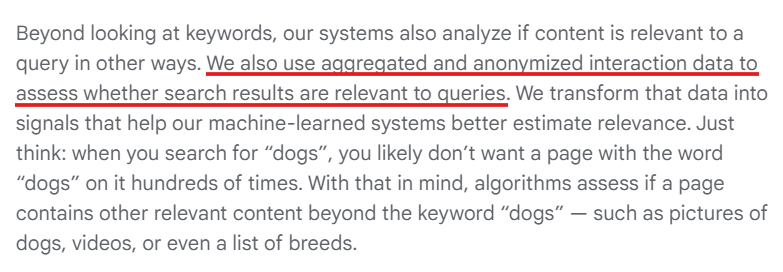
According to Forbes, 6 out of 10 users say they immediately bounce off a page within 5 seconds of failing to find what they are looking for. This emphasizes that websites must hook users early in the introduction and beginning portions of content to keep visitors engaged.
This is where placing links high up on a page comes in.
Hyperlinks are designed to increase user engagement by taking users to relevant pages in their search journey. Putting relevant links high up on web pages can prevent users from bouncing off the site if they click those links.
Let’s say a user finds the linked page useful for their inquiry. As they continuously engage with those links, Google’s interaction signals take notice, indicating the content is relevant. This may result in a bump in those links’ performance on Google SERPs for related search queries.
While no direct connection between link location and link juice is explicitly displayed, a link’s placement may affect SERP ranking.
Google is quiet regarding the relationship between link location and link juice. However, even reputable sites like Ahrefs and Moz agree that link positioning impacts equity.
Ahrefs says navigational links may pass more link juice than intext links. Meanwhile, Moz says sidebar and footer links hold less weight than links embedded in the content.
It’s hard to make conclusions without Google’s confirmation. However, we can always consider expert advice, especially if it is non-destructive to a site’s SEO activities.
What are the Sources of Link Juice?
We have established above that dofollow links are viable sources of link juice. But how does link juice work across various types of links used in link-building activities?
Let’s look at sources of link juice for the following:
- Inbound links
- Internal links
- External links
Inbound Links
Inbound links, or backlinks, are hyperlinks from external websites pointing to your site. They are crucial for SEO, as backlinks serve as votes of confidence, signaling to search engines that your content is valuable and credible. Inbound links from reputable and authoritative websites are abundant sources of link juice, which can significantly improve your website’s authority and SERP rankings.
Backlinks are a quick fix for boosting a site’s SEO performance. The amount of link juice depends entirely on the linking site’s authority and has nothing to do with the target page’s authority.
In other words, collecting high-quality backlinks from reputable domains can elevate your website’s performance even if it has a low DA.
Internal Links
Internal links are hyperlinks that connect different pages within the same website. They help users navigate the site and allow web crawlers to discover and index content. Effective internal linking improves site structure, enhances crawling and indexing efficiency, and distributes link juice that boosts a target page’s performance.
The amount of link juice depends heavily on domain and page authority, which means how much equity an internally linked page receives is limited by the site’s overall search performance.
For this reason, many SEOs prefer building backlinks, indiscriminately dismissing internal links as an inefficient source of link juice and ineffective link-building practice.
External Links
External links are hyperlinks from your site pointing to an external website. They are vital for user experience, leading readers to relevant, valuable, and authoritative content outside the site.
High-quality external links enhance your site’s credibility in the eyes of Google. Moreover, external linking can potentially yield high-quality backlinks when linked domains link back to your website to return the favor.
Learn more: Internal Links vs External Links
Are Backlinks Better than Internal Links?
Not necessarily. Backlinks and internal links have their respective strengths and weaknesses, making them viable link-building strategies. Let’s have a quick run-through of the advantages and disadvantages of both backlinks and internal links below from the context of link juice:
Advantages of backlinks:
- Reputable sites transfer more link juice
- Quick boost in SERP performance
- Referral traffic
Disadvantages of backlinks:
- Low-quality or spammy links can hurt your SEO
- Difficulty in acquiring high-quality backlinks
- Expensive to perform
Advantages of internal links:
- Distribute link juice throughout a website
- Enhanced crawling and indexing efficiency
- Cost-effective strategy
Disadvantages of internal links:
- No external authority boost
- Link juice depends on the overall site’s performance
Both internal links and backlinks offer benefits to a website that can help boost its performance. Using both approaches in link-building campaigns is advisable to maximize your site’s growth potential.
Tips for Boosting Link Juice Distribution in Internal Links
Internal links are viable sources of link juice that can elevate a site’s SEO performance. Here are three ways you can enhance the distribution and transfer of link juice:
Maximize internal linking opportunities
Every internal link is an opportunity to distribute link juice and boost the target page’s SEO. Conducting regular site audits allows site owners to review their websites and find anchor texts that can be placeholders for internal linking.
While manually finding internal link opportunities is manageable for smaller sites, it can be time-consuming and budget-depleting for websites with thousands of pages.
Internal linking software is useful in automatically finding internal links throughout a site. This speeds up the tedious and manual process of finding links, suggesting pertinent internal link opportunities in minutes.
LinkStorm is one robust all-in-one internal linking toolkit that can help suggest internal linking opportunities. It uses two algorithms for finding internal links:
- Semantic Similarity
- Content Matching
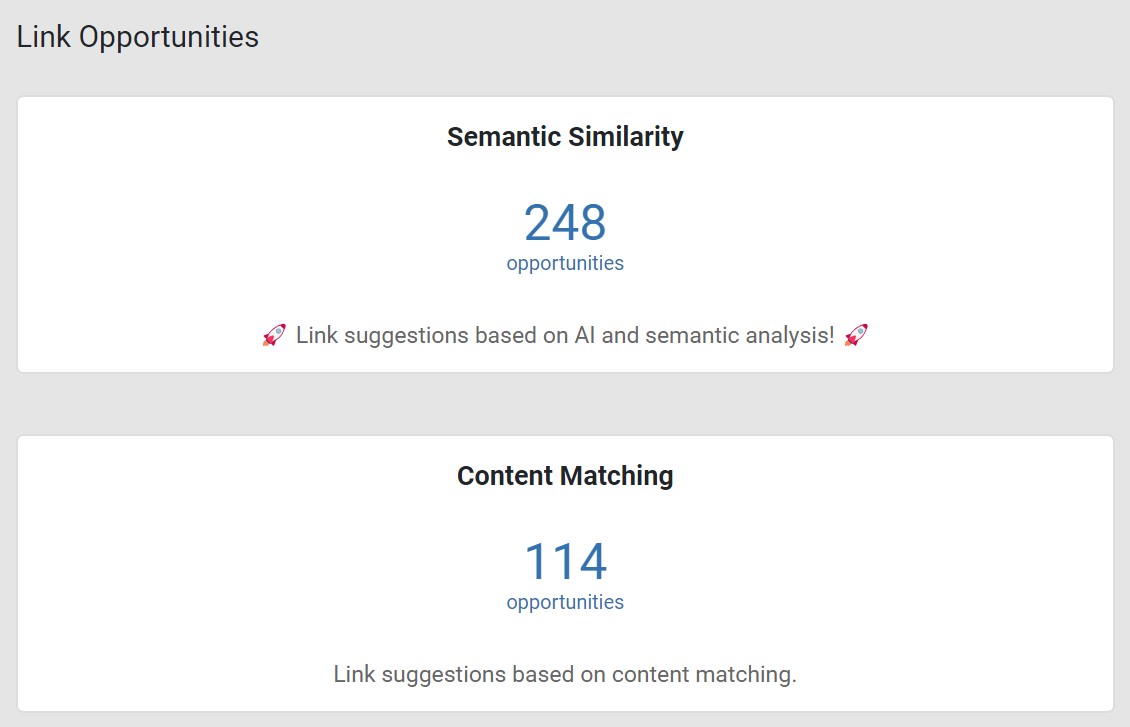
Semantic Similarity: LinkStorm uses AI machine learning to read online content and find contextually relevant internal link suggestions using semantic analysis. LinkStorm can find undiscovered angles to connect related pages.
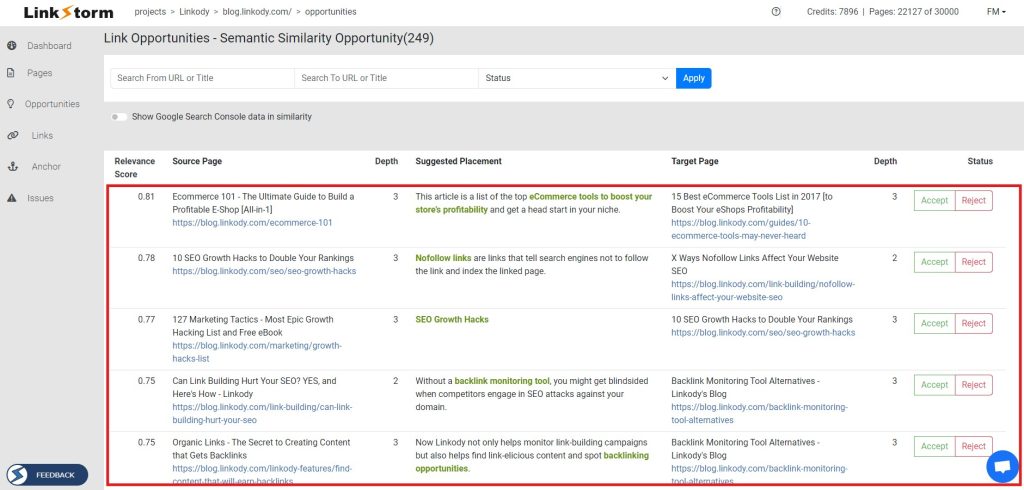
Content Matching: LinkStorm finds seed keywords throughout a website that serve as anchor text placeholders for interlinking relevant web pages.
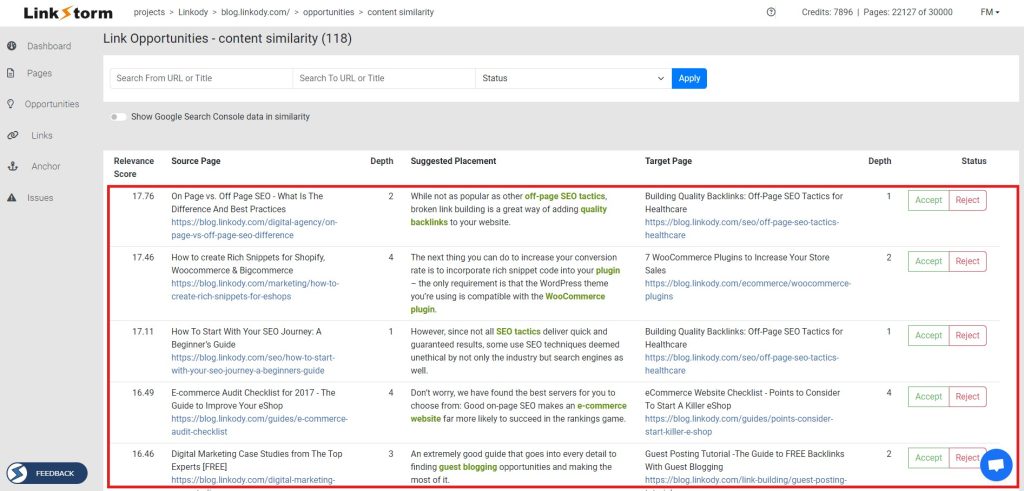
Using an internal linking software like LinkStorm can help maximize your internal links and boost your pages’ SEO performance. Moreover, LinkStorm’s Opportunities Tab features insights, like average position or click depth, that can help users control the direction of internal linking activities.
For example, when you build internal links from high to low-average positions, you help boost the SERP ranking of poor-performing pages. This is called the “scale-down approach.”
Conversely, users can pursue a “scale-up approach.” This means building internal links from pages with high average positions to fellow high-ranking pages, giving these links an extra boost in SERPs.
Reclaim broken and nofollow internal links
Another solution to maximize link juice distribution is reclaiming broken internal links, which means finding internal links on a website that point to broken links.
Broken links are dead ends in a website’s architecture, often displaying a 404 Error Message. Aside from giving users a poor search experience, broken hyperlinks also minimize the amount of link juice transferred from a source page.
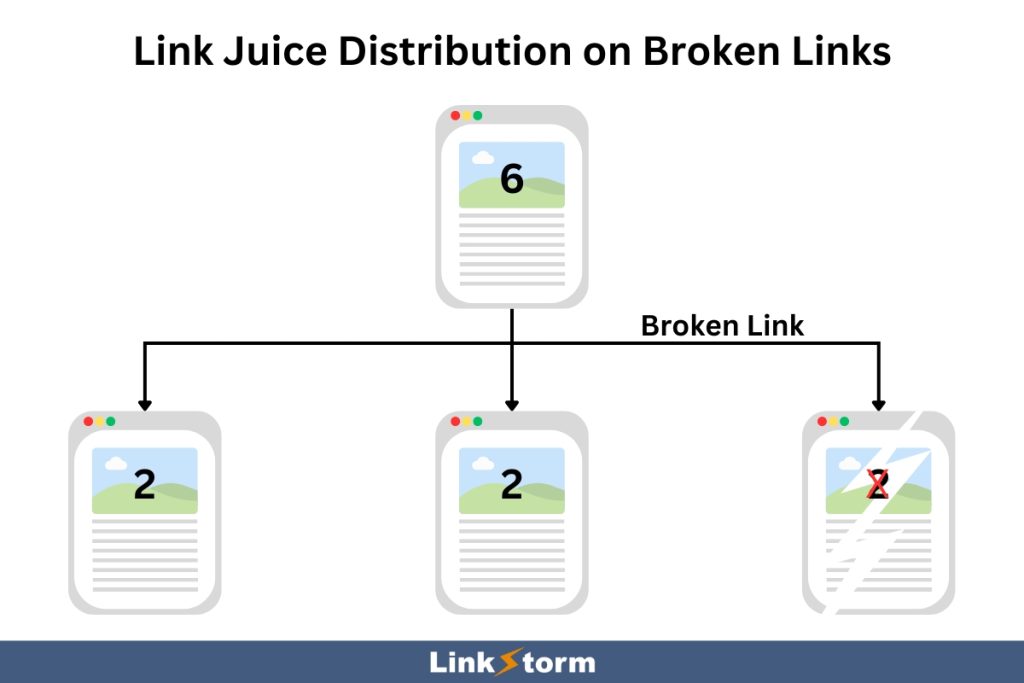
On the other hand, nofollow links do not necessarily hamper the user experience. However, they also limit link juice distribution on a website.
Since link juice will be equally divided among all links, broken and nofollow links will only dilute the equity other pages receive while wasting the link juice allocated to the broken or nofollow links.
Reclaiming these internal link issues can prevent link juice from getting wasted.
LinkStorm is a useful tool for identifying internal linking issues on a website, including broken links and nofollow links, as shown below.
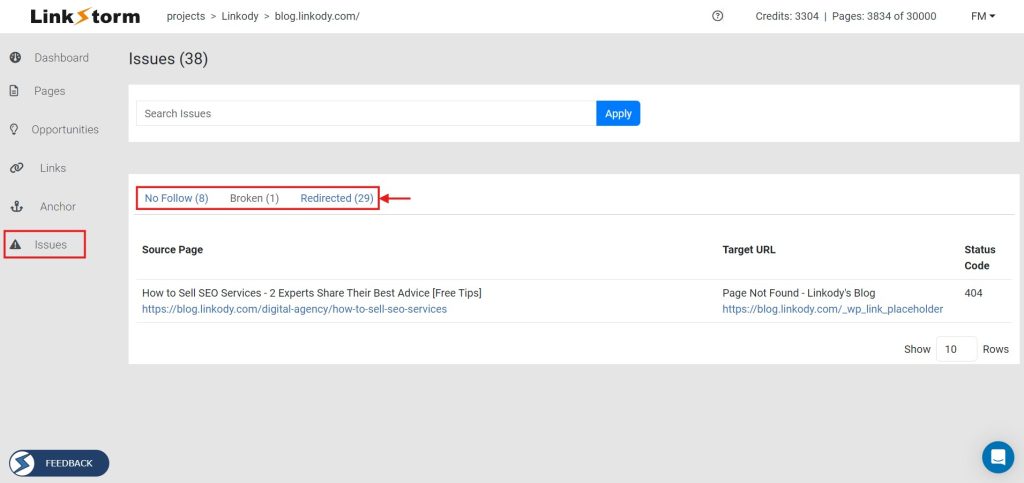
Using the information provided by the tool, users can fix the issues from their website, restoring proper distribution of link juice across web pages.
Optimize internal link anchor text
Anchor texts and link juice do not have a clear-cut relationship. However, anchor texts are important since they provide context for users and search engines to understand a linked page’s content.
It is crucial to implement internal linking best practices, like using descriptive, keyword-rich anchor texts, to benefit the search experience by letting users know what to expect behind the linked page. Conversely, search engines use anchor texts to weigh the relevance between interlinked web pages.
LinkStorm has a dedicated hub to view and manage all the anchor texts used throughout a website.
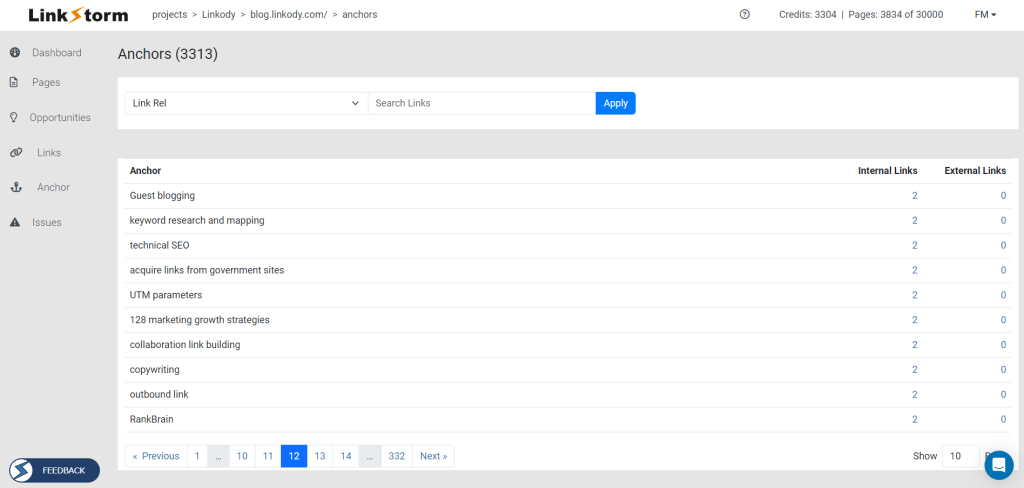
This can help users optimize their anchor texts by minimizing generic and branded anchors while promoting balanced use of other types of anchor texts, such as:
- Exact-match
- Partial-match
- Phrase-match
- Branded + keyword
For example, take a look at the anchor text distribution of a website before using LinkStorm:
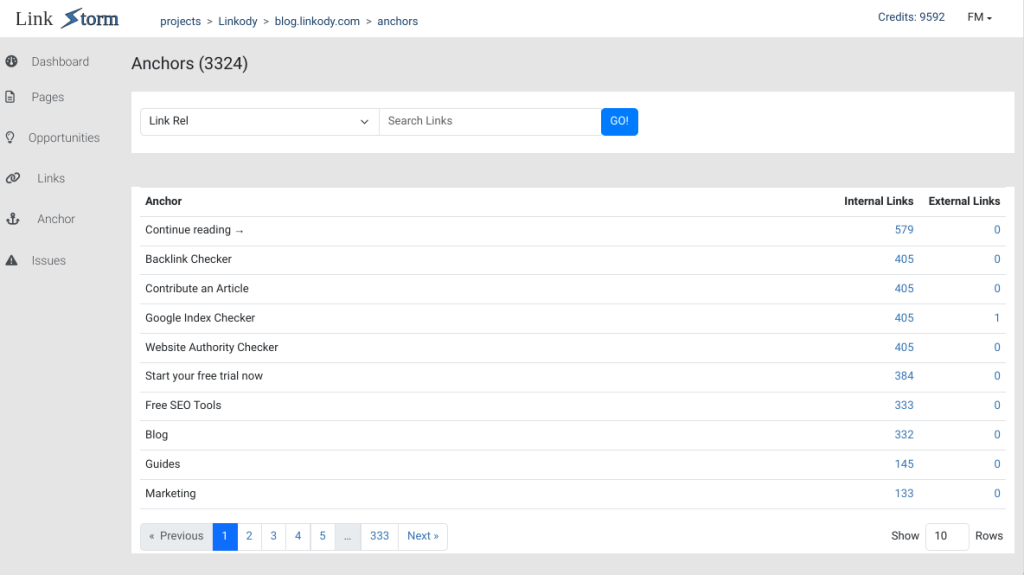
Anchor texts are more than just words. Managed correctly, they can indirectly help websites rank higher on search results.
Maximize Link Juice Distribution with LinkStorm!
LinkStorm is a versatile tool designed to elevate the internal linking campaigns of SEOs, publishers, and site owners.
Using the tool’s arsenal of functions, you can effectively distribute link juice throughout your website, boosting the SERP visibility and ranking of targeted web pages.
Are you an SEO agency or a publisher? LinkStorm is a must-have for your business.
Explore our pricing tab to see which plan best suits your needs. Or, try LinkStorm for FREE, no strings attached.
Happy linking!
 Written by Joel Cariño
Written by Joel Cariño